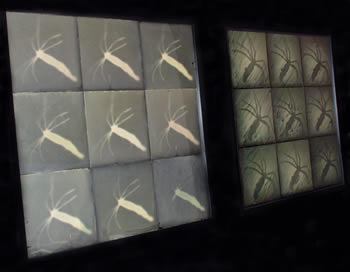The ability to reproduce an image is ubiquitous. In fact, most images are not originals, almost by definition, and the idea of original is equivocal. Can copies be originals? Extending a parallel with biological evolution and natural selection one could consider that each copy is, by necessity, the primordium of an original, that is, if and only if its peculiar variations (nothing is truly identical) are selected to populate the world in an over-representative manner. An image that is printed or seen in a different manner, media or circumstance may achieve a new life as such, becoming, in fact, a cultural original. Here originality no longer resides only in the content but is dependent on the context.
Re-production shifts
the meaning of originality from the variation in imagery (content)
to that of the supporting media (part of the context). In contrast
to digital printing where error rate is minimized to trick the
viewer to ignore the reality of the image and focus on
its
message. Re-production presents unique, hand-made dry plate ferrotypes,
in which the uniqueness and originality of each piece is more critical than
content to the point of replacing its meaning. In these images of hydra, stem
cells, bones or eroded shells - each carrying the promise or the history of
a life - error rate is maximized, re-producing originals by design, and giving
them new lives in the viewers’ eyes.
|

|

